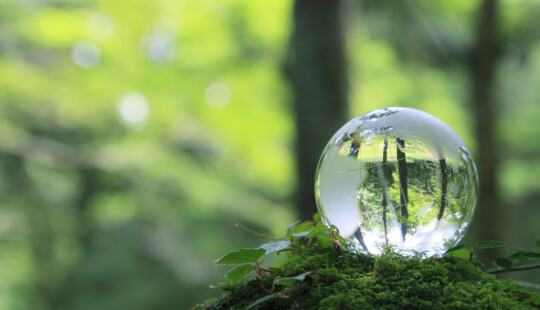A new openSAP course, Designing a Circular Economy, addresses how we can create the products we need in a circular way, designing out the overwhelming waste, pollution, and harms to natural systems that are hallmarks of our current linear economy model.
The global waste problem is growing, with less than 8% of the 100 billion tons of materials we consume annually making it back into circulation. Plastic waste is one catastrophic example, with the equivalent of one garbage truck of plastic getting discarded in our oceans every minute, on top of the 200 million metric tons that have already accumulated. Once produced, plastic can endure for hundreds of years, breaking down into what are known as microplastics and slowly poisoning natural habitats and animals, which directly impact the well-being and economic livelihoods of millions of people. Despite this stark reality, global demand for plastic continues to rise, with production expected to triple by 2050.
This is a global crisis requiring immediate and sustained action. To tackle the plastic waste problem, we must commit to a circular economy model, where we eliminate waste and pollution, recirculate resources, and regenerate natural systems. The circular economy changes the way we source materials and make and use products.
What’s more, new regulations are putting pressure on global business to adopt a circular economy model. In March of last year, world leaders agreed to a historic resolution at the United Nations Environment Assembly to negotiate an international, legally binding instrument on plastic pollution by 2024. In the European Union (EU), the circular economy is a central feature of the European Green Deal, a set of policy initiatives signed in 2020 with the aim of making the EU carbon neutral by 2050 and setting new requirements to make products more reusable and energy and resource efficient.
With an estimated 80% of the environmental impact of a product determined at the design stage, a key element of the circular economy is in the design of products and their packaging. Circular design at its most strategic level is a huge lever for the overall reduction of the environmental and climate footprint of products, as it considers all aspects of product development, including materials used and the manufacturing process. Most significantly, circular design considers what becomes of the product or its component parts once it has reached the end of its usefulness.
As Sarah Gillespie, customer success manager for Circular Economy at SAP, says, “Design is an absolutely critical stage of product development where we can have an enormous impact for good. By following circular principles at the design stage, we can design out waste from the beginning instead of simply mitigating it.” Circular design can also help to address the growing climate issue, since an estimated 45% of all global greenhouse gas emissions are linked to how we manage material flows for products.
Circular design helps organizations to review their processes and take steps towards using less raw materials and with more efficiency. But one of the biggest challenges for business to implement circular design is getting accurate data, which is crucial for assessing material flows and resource productivity. For example, companies need data to understand whether an organic material they are using in their product was regeneratively grown. Technology will play a fundamental role in enabling businesses to access the data that they need to make optimal material choices, create better supply chain transparency, and comply with government requirements. SAP has both the technology and the responsibility to help global enterprises use the power of data, networks, and partnerships to achieve their targets and develop circular systems.
The new openSAP course, Designing a Circular Economy, offers customers, partners, and anyone interested in the topic a deeper understanding of how to apply circular design principles to their own business. SAP’s last course on this topic introduced the circular economy and how to implement circular business practices. This new course will focus on how to create the products we need in a circular way, using a systems approach that considers how the constituent parts work together and evolve over time. In this course, you will learn about circular design, what role design plays in products and packaging, what is meant by regenerative design, what nature can teach us about product design, and how technology can help.
The course features many external speakers, including experts in circular design, packaging, and biomimicry to name just a few, such as Joe Iles, circular design programme lead at Ellen MacArthur Foundation, Saskia van den Muijsenberg, cofounder of BioimicryNL, and Sian Sutherland, cofounder of PlasticFree.com.
Anyone can register for this free, on-demand, four-week course, which begins May 23, 2023, and involves just a few hours of coursework per week. During the course you can earn points, a record of achievement, and a digital badge that you can share on social media.
We encourage you to sign up here and share it with your networks. The global waste problem is a humanitarian crisis that we must confront together. Arming ourselves with the knowledge to develop urgently needed solutions is a wonderful place to start.



